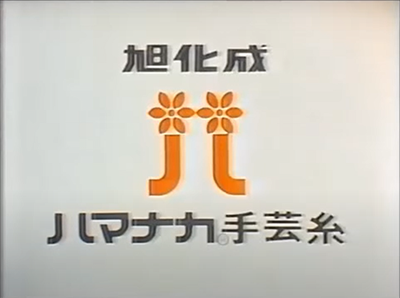100 Stories1957 The Spark that Set the Handicraft Fad in Motion! Hamanaka Yarn
Hamanaka Yarn can be recognized by its nostalgic jingle, with the simple lyrics of “Asahi Kasei, Hamanaka Yarn♪”. Nowadays, the handicrafts section of any given arts and crafts store will surely be stocked variety of colorful yarns for sale.
Asahi Kasei began a partnership with Hamanaka Co., Ltd., a yarn company, in 1957. Hamanaka stocked ANDARIA™, a rayon yarn that became popular as a handicraft yarn for making bags and baskets, and Cashmilon yarn, an acrylic fiber with a texture similar to cashmere as well as high heat retention and dyeability. ANDARIA™, in particular, set the arts and crafts fad in motion among women who enjoyed knitting things with a completely new texture that was different from other yarns of the time.
Rikio Hamanaka, the founder of Hamanaka Co., Ltd., was a large-hearted man who did not mind when other companies in the same business would quip, “Hamanaka is not in the yarn business... they are in the handicraft business.” In fact, Hamanaka believed that “value is found in originality and ingenuity,” so selling natural wool yarns with no inclination toward change was more unnatural to him.
In 1968, he held the Hamanaka Festival at the Akasaka Prince Hotel, which was a preview of his new synthetic yarns for knitting.
In the late 1980s, the Osaka Women’s Union hosted knitting classes. The yarn used was, of course, Hamanaka yarn. They had a knitting instructor there to teach the basics of knitting, and the classes functioned as a great way to communicate outside of work and relieve stress.
Although the partnership with Asahi Kasei has been dissolved, Hamanaka Yarns are still widespread throughout Japan’s arts and crafts stores. Asahi Kasei no longer manufactures ANDARIA™ or acrylic yarns, but the industry itself is alive and well.


